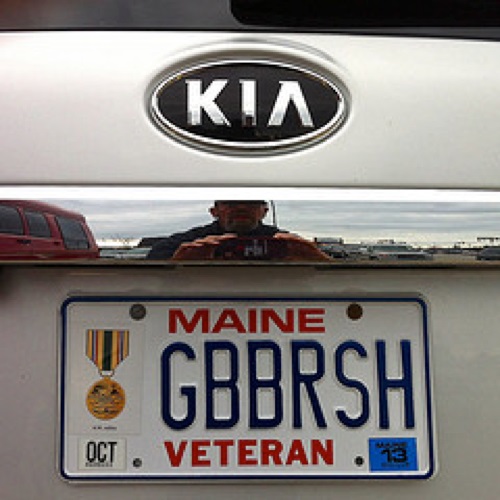“You’re talking a lot. But you’re not saying anything.” –David Byrne
My parents were both doctors. They also were from Ireland, which means of course that they had a way with words.
My dad could explain his day and what happened at the hospital with vivid imagery and a great sense of humor. But when he finally had to explain an actual medical condition, he switched from clear, entertaining, idiomatic English to what sounded like Greek-Latin gumbo.
He’d have me, and then he’d lose me.
What exactly is an MI? It’s a myocardial infarction. What’s a myocardial infarction? A cardiac arrest. What’s that? A heart attack. Oh.
The Healthcare Language Gap
The language of healthcare is specialized. We all get that. And in an industry like healthcare, jargon has its place—when members of a community speak in the community’s jargon, they save time, and they understand each other completely (think about football coaches or IT professionals).
But when those same professionals try to speak to someone outside of the community, the words they use with each other have no meaning. When a speaker says words to a listener, and the listener doesn’t understand those words, communication is not taking place. At best, it’s pretending to communicate.
The language of insurance is equally obscure and difficult to understand. While everyone tries to read their insurance policy, most people have trouble understanding it. Do you have coverage for rental cars as part of your auto policy? (I don’t know either.)
When these two forces collide with health insurance reform, they create, as you can imagine, a perfect storm of people pretending to communicate.
I don’t know what healthcare terms mean, and I don’t know what insurance terms mean. That means that I completely tune out of conversations involving both of them, neither of which I have a very deep understanding of.
It’s similar to those classes in high school where you were unprepared and had no idea what the teacher was going on about. If you don’t get it, it’s extremely unlikely that you’re going to pay attention. The worst effect of this is that when the listener tunes out, he stops giving feedback to the speaker. So the speaker thinks everything’s fine, or at least that he doesn’t need to change the way he communicates.
A Crisis of Communication
Everything I mentioned above about gaps in communication between those who understand jargon and those who don’t is why we’re currently at such a crisis point in U.S. health insurance communications.
The media hasn’t helped—by calling healthcare reform Obamacare, it has become a debate on whether you like the President or not, as opposed to a useful understanding of what the new law means to the average family. The legislature didn’t help, by openly making members of Congress vote on it before they had even read it. And insurance companies and health care providers are still communicating in the way they always have.
This all adds up to a communication crisis of epic proportions. Healthcare companies and insurance companies barely seem to understand each other as is, so you can imagine how much trouble members of Congress and members of the general public have understanding the conversation about the Affordable Care Act.
Social Media: A New Bridge for Communications?
Social media doesn’t fix everything, but it does represent a discontinuity in the way that things were done before. Because of social media, there are more ways to communicate both broadly and narrowly to specialist audiences.
Consider the audiences for a typical U.S. hospital, and how well-versed in industry jargon they are:
- Patients: Read at a 7th-grade level, although the ones who need the most help may be illiterate, with little understanding of medical jargon. A subset of patients are actively managing their own health and understand specific medical jargon related to their condition
- Doctors: Read at graduate school level, completely immersed in medical jargon
- Nurses and PAs: Read at high school/college level, good understanding of medical jargon
- Non-medical staff: Read at 7th-grade level, some understanding of medical jargon
- Business partners: Read at average-to-high level, with varying understanding of medical jargon (pharma reps vs. cafeteria suppliers)
- Other hospitals: Read at average-to-high level, good understanding of medical jargon
- Local stakeholders (neighbors, voters, et al.): Read at 7th-grade level, little understanding of medical jargon
That’s 7 segments with different needs and communication styles–not to mention different usages of media.
Segmentation is at the heart of any meaningful social media strategy, because strategy is about saying no. Trying to serve all of these audiences with one method of communication is foolish, and leads to the inept, watery branding exercises we see so often in healthcare, where hospitals assert that they care about the patient (not exactly distinctive).
Social media and healthcare, then, are a combination that can provide a new chance for hospitals and healthcare brands. Instead of one-size-fits-all messaging, audiences can be segmented into distinct groups with different needs, platform preferences, and comfort levels with medical jargon.
A great example of this is the healthcare hashtag project, which allows people to self-select into groups who literally speak each other’s language. Turns out that social media and healthcare do mix after all.
Consumer brands have been thinking this way for a long time, and B2B brands are catching up. Healthcare has a huge opportunity to change the way that people think about it—from something forbidding and confusing, to something that is about help, and, dare I say it, love.
If you have any questions about how your healthcare organization should be using social media, feel free to reach out to us in the comments or on Twitter. We know the language, and we’re always here to help.
Image credit: origamidon via Compfight cc




